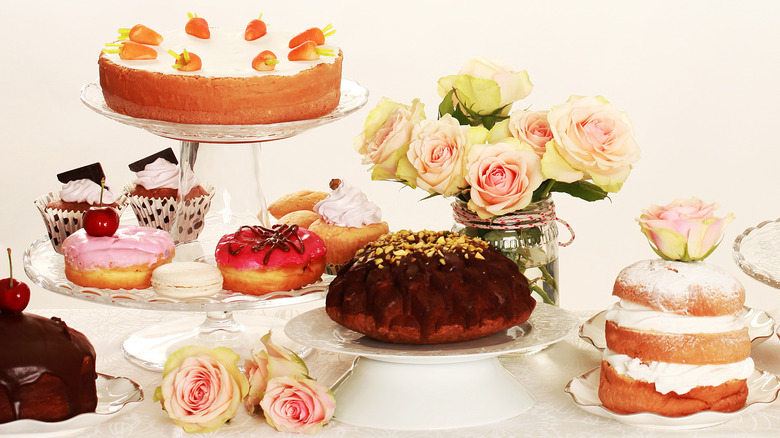Martha Stewart's Go-To Method Of Serving Desserts At Dinner Parties
Martha Stewart knows how to throw a classy dinner party; she'll consider everything from table settings to creative garnishes. So when she says she has a go-to method of serving desserts at her shindigs, hosts everywhere listen. While some might assume she brings out elegantly plated cake slices or individual bowls of ice cream, the opposite is true. Martha Stewart likes to create buffet-style dessert tables.
Rather than limit guests to one dessert on the menu, Stewart recommends opening up their options. That way, if someone is allergic to strawberries or not a fan of chocolate, they don't have to be disappointed with the last dish of the evening. They can instead pick and choose what they want — and how much of it they want. While it may be awkward to ask the host for a third slice of pie, it's perfectly acceptable to get up and grab that slice off a buffet table!
What to include in your dessert table
Creating a cohesive dessert table takes some forethought. You want to include a variety of items that span different flavors, sizes, and sugar levels. First, consider your guest list and their preferences. If you know your friends aren't huge fans of chocolate, you can skip the ganache cakes and chocolate-dipped donuts. Instead, lean toward citrus pies and fruit pastries.
Second, choose your focal points. You want a couple of "centerpieces" that will excite guests about the last course. This typically includes cakes or pies. If you have more than one, vary their sweetness levels. Have one that is chocolate based, another that is fruitier, and perhaps a third that is light and airy.
Next, have your medium-sized treats, such as cupcakes, brownies, cheesecake squares, tarts, pudding cups, or donuts. These aren't as big a commitment as a whole cake slice, but they still allow a taste treat. Then to round out the selection, have bite-size snacks in different textures, such as cake pops, macarons, flan, cookies, popcorn, or chocolate-dipped fruits. This ensures that the options don't all feel the same, creating a well-rounded selection.

